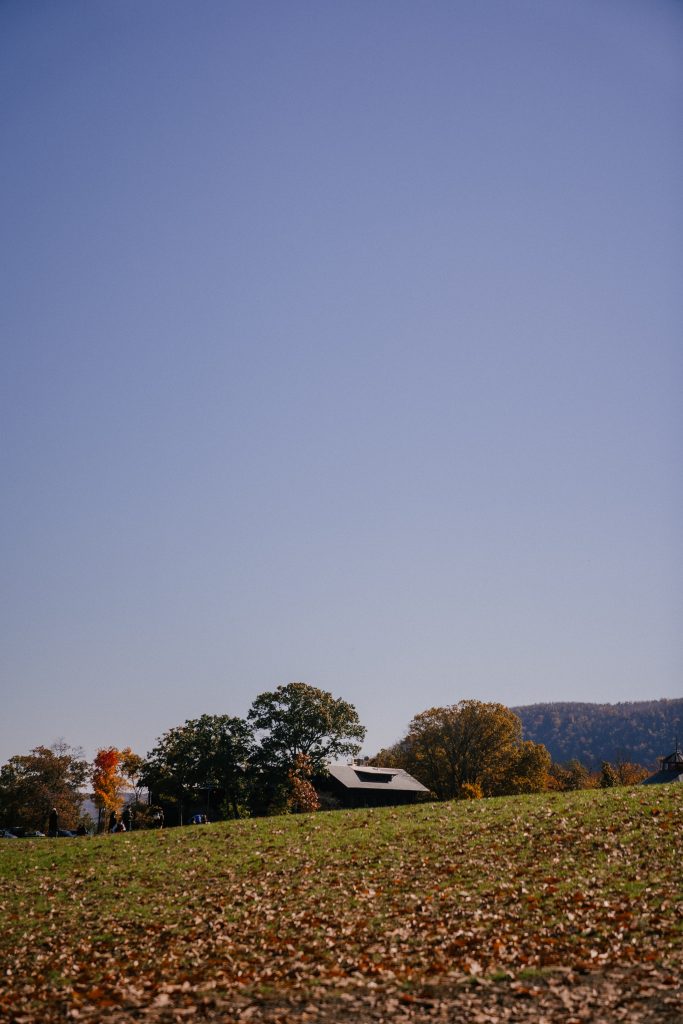
You’ve put in the hard work and scheduled yard treatments to maintain a lush, green lawn all summer. Now the weather is cooling down and you’re ready to pack it in. But wait, don’t forget about fall yard treatments! That’s right, just because the grass growing season is ending doesn’t mean you should just neglect your yard. If you’re wondering what kind of yard treatments are recommended this fall, we’ve got you covered.
Fall Yard Treatments
The weather is changing, and so are your yard’s needs. Instead of preparing your lawn for the stress of heat, drought, and heavy use, you’re readying it for winter. These fall yard treatments will help you get your lawn in great shape for winter and next year’s growing season.
Fertilizing
Grass needs to be fed in the spring to encourage growth and in the summer to stay strong. So too, fall fertilizing is necessary to get grass roots through the winter. Fertilizer protects these roots from freezing and gives the entire plant the energy to bounce back in the spring. Plan on a late-fall application of a slow-release granular 24-0-10 fertilizer. The numbers indicate the percentage by weight of nitrogen, phosphorus, and potassium, respectively.
Potassium is also important for fall fertilizing because it aids in root growth, disease protection, drought tolerance, and cold resistance. If you’re unsure what exactly your lawn needs, a simple soil test can tell you how much of each nutrient to add.
However, take care not to spread fertilizer close to waterways. Winter rains mean nearby waterways are vulnerable to contamination from runoff. Most lawn companies recommend you maintain a 5-foot buffer wherever water is present.
Watering
Just as grass roots need food to last the winter, they also need the proper amount of water. However, people tend to let up on watering in the fall as the weather gets cooler. Don’t make that mistake! There’s indeed more rain, dew, and less evaporation in the fall. However, that may not be enough to keep the roots hydrated and healthy going into the winter.
If your lawn isn’t getting at least an inch of water a week, keep the sprinklers or irrigation system running until the end of October. If you aren’t sure how much water your lawn is getting naturally, a simple rain gauge is a useful way to keep track. Once you’re a couple of weeks out from the first freeze, you can stop watering. This is when you can disconnect hoses and flush the irrigation system to avoid frozen pipes and spigots.
Mowing
We know you’re tired after a long summer of yard work, but don’t put that mower away yet! Grass continues to grow right up to the first hard frost. Thus, it will need regular cuts to keep it at an ideal 2½ to 3-inch height. If you let your lawn get too long, it will mat and be vulnerable to fungi.
Alternatively, cutting grass too short is also detrimental. If you cut your grass too short to cut corners on your fall yard treatments, you risk damaging the root system. Root depth is proportional to cutting height. Thus, curtailing it impedes the lawn’s ability to withstand winter cold and dryness. So keep an eye on the weather forecast and on your lawn height to make sure you give your lawn the fall trim it needs.
Other Fall Yard Maintenance
Remove Debris
A carpet of colorful autumn leaves may look nice and be fun to play in, but they’re no good for your grass. Leaves and other lawn debris block the light and trap moisture. Bad news for the grass below.
Once leaves start falling, blow or rake them away as often as you can. The same goes for lawn furniture and yard toys. Anything left sitting on your grass all winter will lead to soggy, decaying turf come spring.
Aerate
Regular aeration prevents soil from becoming compacted and covered with thatch. Thatch is a thick layer of roots, stems, and debris that blocks water, oxygen, and nutrients from reaching the soil. In the winter, your soil may become compacted from rain and freezing temperatures making your lawn more prone to thatch in the early spring.
A core aerator corrects both problems by punching holes through that thatch and pulling up plugs of soil. It’s a good idea to aerate a lawn right before fertilizing. All those holes in your turf will let the fertilizer reach right to the roots, where it can do the most good. Combine your efforts and see the best results come spring growing season!
Seed Bare Spots
When kids and pets play on a lawn that’s still recovering from the summer heat and drought, it can cause damage. If you have bare spots on the lawn, use a product specifically formulated for repairing bare spots. To thicken up a thin lawn, consider over-seeding the lawn, as well. With any seeding project, keep the soil surface moist. Aim for a light watering once a day or as needed until the seedlings have reached a mowing height.
Preparing Your Yard for Winter
Check the Gutters
While you’re preparing your home and yard for winter, check the gutters and give them a good cleaning. Clogged gutters are bad for your home, but can also damage your lawn. Uncontrolled runoff and debris are a recipe for lawn damage. Make sure your gutters are working well before the first winter storm rolls in.
Check Your Tools
Soon you will have completed your final mowing, aerating, and other tool-using for the season. Thus, you might be eager to chuck those tools in your shed and forget about them for a few months! However, now is a great time to clean off those tools, check for necessary repairs, and store them carefully. This way they’ll be clean, sharp, and ready to go in the spring. Future you will thank you for the effort!
Bottom Line on Fall Yard Treatments
After a long summer of work, you may feel worn out. However, a little bit of lawn care now can make a major difference next spring. Thus, make your life easier in the spring by being proactive with yard treatments in the fall.
